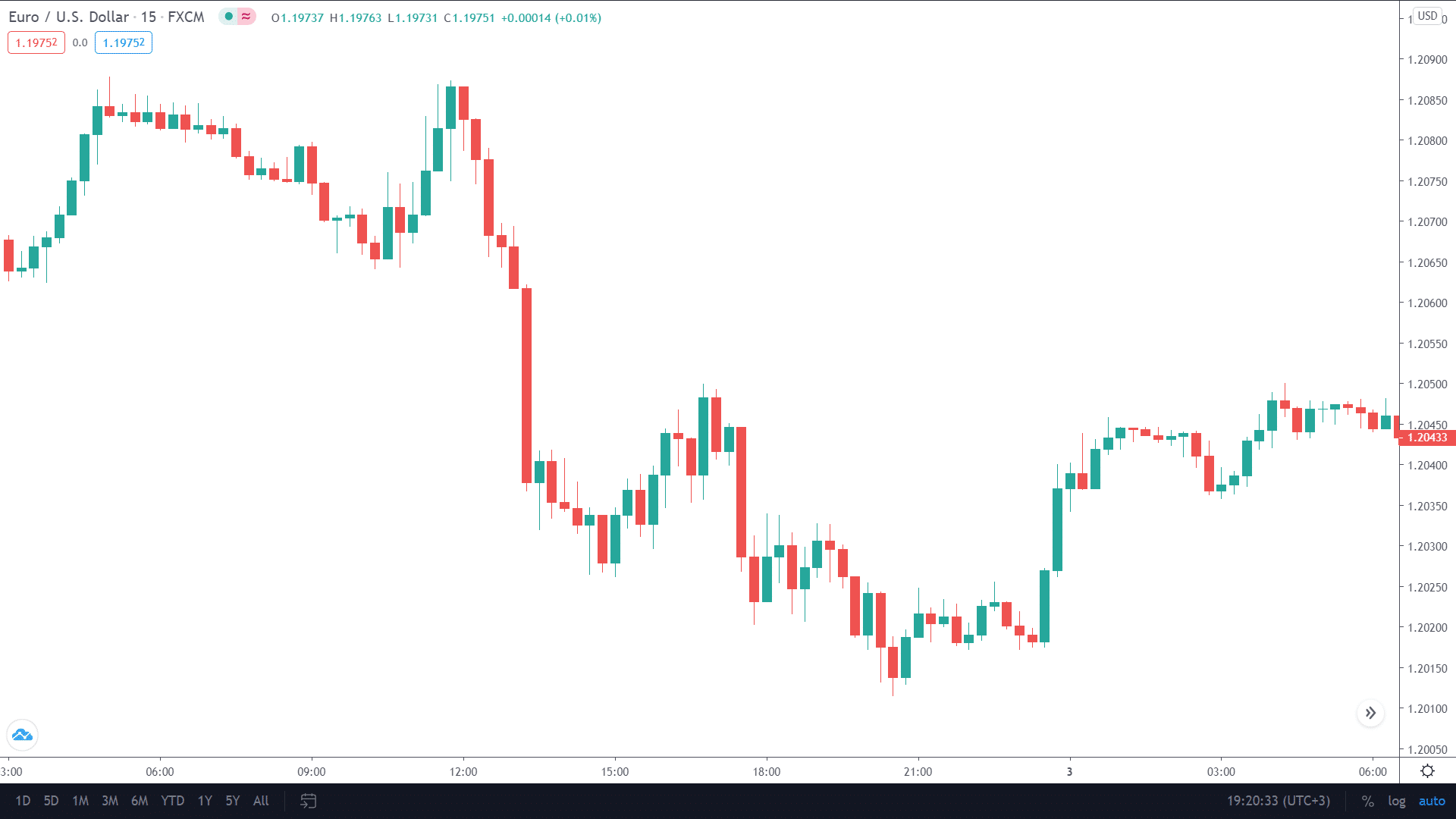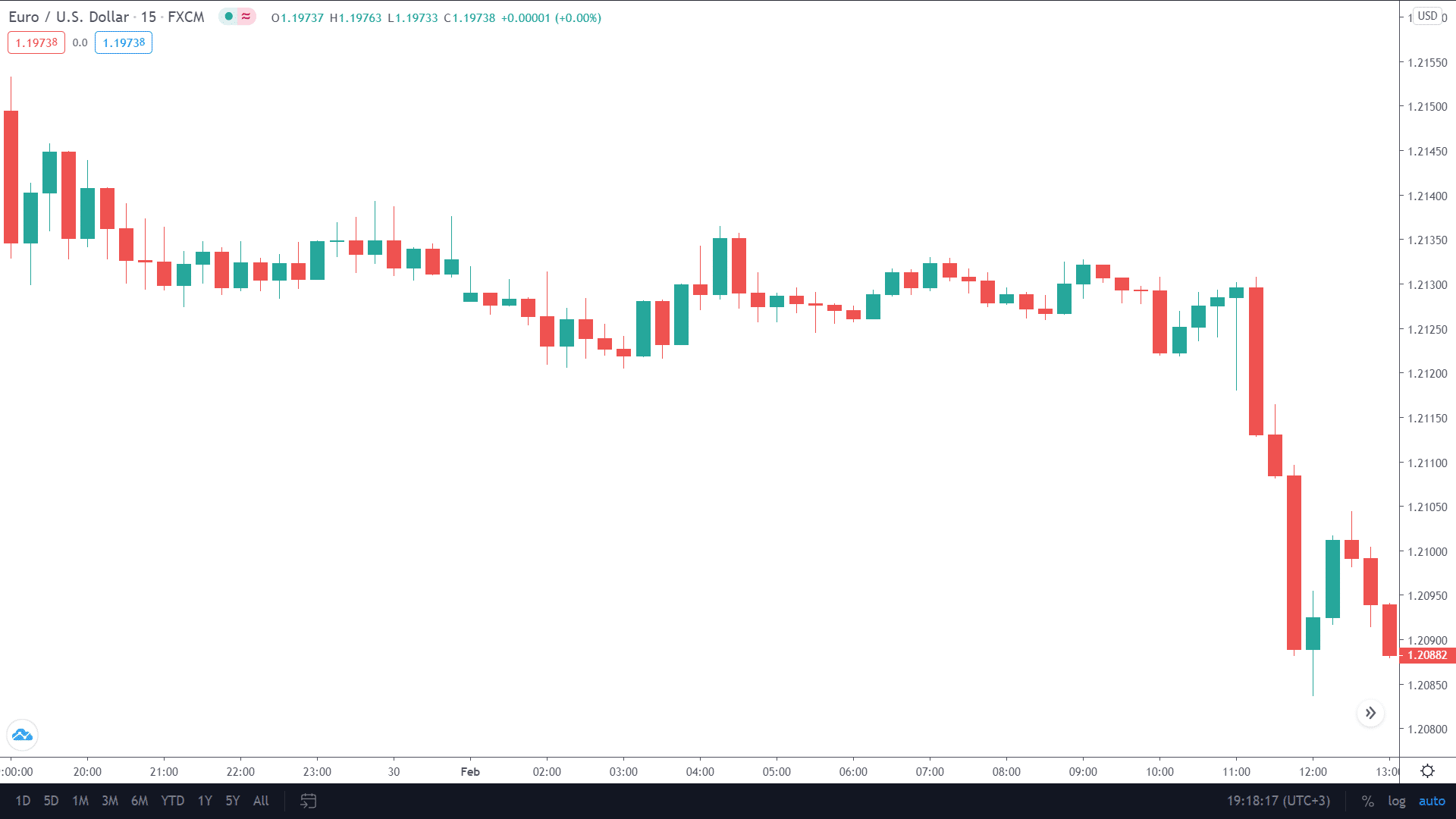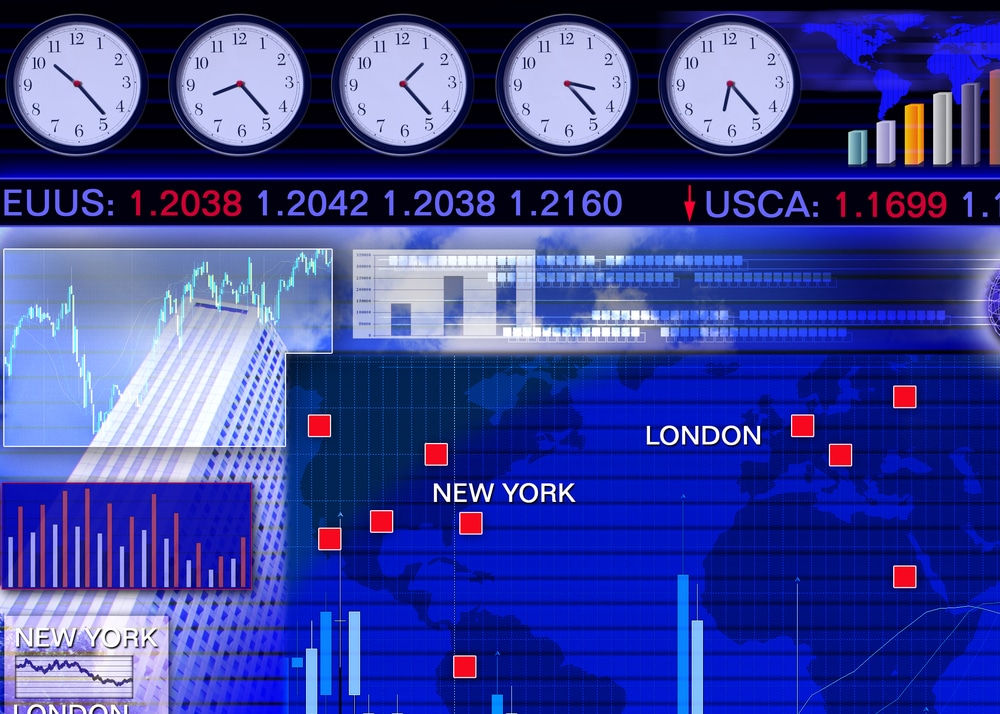Forex is an over the counter market for trading currencies. It allows you to trade on this instrument from 5 PM EST on Sunday until 4 PM EST on Friday. You can execute positions in FX 24 hours because there are different time zones globally around which the currencies exchange. As the market closes in one region, it opens in the other immediately or with a minimal time gap. Traders and banks are always buying or selling pairs, which contribute to the volatility and impressive liquidity. A significant trading volume of 6.6 trillion $ in FX is due to this reason.
Major trading sessions
The major trading sessions or time zones in forex overlap with one another. Many exchanges worldwide combine to form a global network that is busy each hour in trading FX. While the time zones interact over the generally accepted pattern for them is as follows:
- New York 8 AM to 5 PM EST (1 PM to 10 PM UTC): New York session carries out 17% of all the transactions in forex. It is also known as the North American session, as most financial hubs are in the country’s upper part. As the dollar constitutes all of the major currency pairs in forex, any incoming news can move the markets by a significant margin.
- Tokyo 7 PM to 4 AM EST (12 AM to 9 AM UTC): 20% of all the forex trading volume comes from the Tokyo session. It includes one of the central Asian countries such as Singapore, Hong Kong, and Japan. You are more likely to see moments in pairs relative to these nations, such as USD/JPY and AUD/USD.
- London 3 AM to 12 noon EST (8 PM to 5 PM UTC): The morning of London session overlaps alongside the Asian, and it shakes its hand in the afternoon with New York. This period comprises 43% of all the trading volume in forex. It is also known as the European session as it includes major European countries such as Paris, Edinburgh, Amsterdam, Zurich, and more. It is best to stick with major currency pairs as they have tight spreads; however, you may also try creating euro and yen during the overlap stop.
You may experience a change in volatility as the shift takes place. Significant liquidity and volatility are during the overlap among London and New York trading sessions.
What type of trading session should you choose to trade?
Considering the maximum trading volatility during the overlapping hours and the best liquid traders tend to capitalize on these sessions to get the market’s broad movements. Scalpers and traders can make the best use of hours in between New York and London sessions. The top fundamental news also comes out during these sessions.

Image 1: Notice markets’ volatility during the London and New York session overlap from 14:00 to 16:00.
The markets are typically dull when shifting from the European to the Japanese session. This period is also termed as the dead zone where the price rarely shows any movement. The volatility dies down, and the liquidity becomes low as fewer participants remain. You may not get filled on your trades or experience some slippage. However, swing traders are not concerned with such factors as they keep their positions open at a more prominent approach. Traders can exploit range-bound markets.
The opening and closing hours of the market can differ during October/November and March/April. This change is due to the daylight saving times, which many countries observe.

Image 2: Note the market volatility in the Asian session from 12 to 6. As soon as the London session begins, the market shows movement.
It is also essential to note that market volatility and liquidity is more add the middle of weekdays. Statistics also show that the more prominent pip movements are during Tuesdays and Wednesdays.
Sessions in other markets
Other markets, such as stocks and futures, have their own timings that are different from currencies.
Stock market
Stock exchanges around the world open and close according to their respective times. The US stock market, including the New York Stock Exchange NYSE and NASDAQ, is open from Monday to Friday 9:30 AM to 4:00 PM. You can also spot some pre-market trading that can start as early as 4:00 AM. After hour sessions are available, consisting of traders opening or closing their positions up to 8:00 PM.
The stock market’s initial hours are full of volatility as big investors are busy opening and closing their positions. Traders usually prevent trading at this time to avoid getting stopped out due to price fluctuations. Many professional day traders stop trading around 11:30 AM, as that is when most of the market players leave for lunch. Lateral movements in the charts are seen during this period. After 1:30 PM, the majority of people start rolling in, where a lot of activity is present during the last one or two hours of closing.
Futures
The future market is open nearly 24 hours a day, six days a week from Sunday afternoon till Friday afternoon. The open hours may also differ depending on the type of asset you are trading. These instruments are relatively less volatile compared with the Securities.
End of the line
The different sessions and the related volatility and liquidity makes financial markets a unique place for trading. The difference in periods and price movement ensures that traders of all personalities can test out the industry according to their linking.
